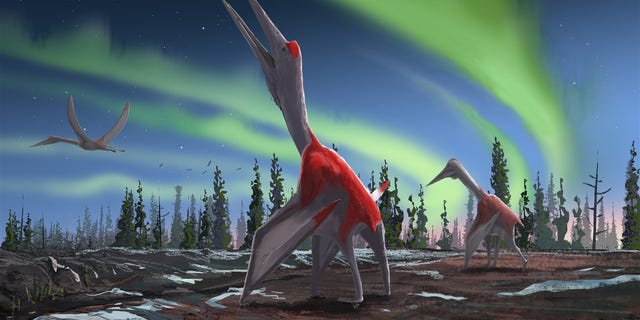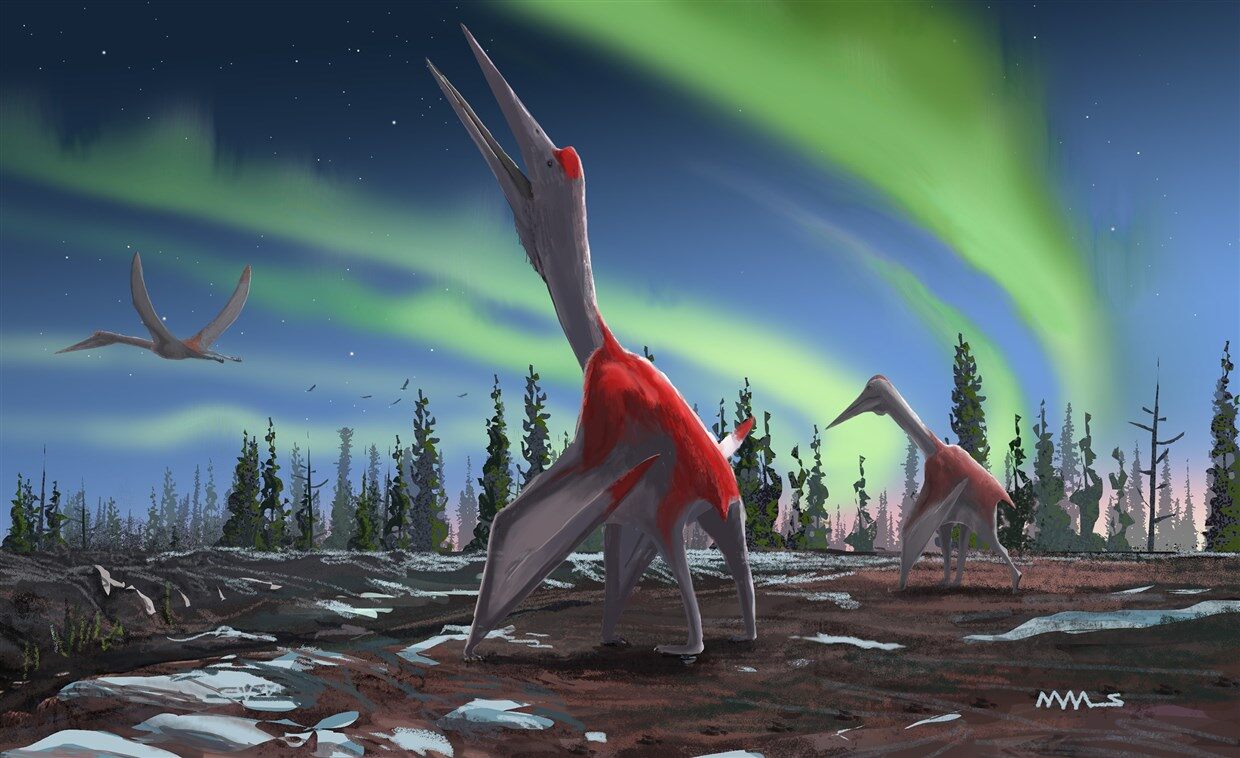Fox News Flash top headlines for Sept. 16
Fox News Flash top headlines for Sept. 16 are here. Check out what’s clicking on Foxnews.com
A newly discovered ancient reptile dubbed the “flying dragon of the north” with an F-16 sized wingspan is said to be the largest flying animal ever uncovered, according to scientists.
The flying reptile named Cryodrakon boreas lived in what is now western Canada about 76 million years ago, according to a study published last week.
The Cryodrakon’s bones have been known to scientists for nearly three decades, however, it has only now been confirmed as its own genus in the Journal of Vertebrate Paleontology.
FISHERMAN CATCHES STRANGE, 'DINOSAUR-LIKE' CREATURE
“The animal, when alive, would not have been a frozen dragon,” the study’s coauthor Mike Habib, a paleontologist at the University of Southern California, told National Geographic.
“It would have [been] flying in a landscape that would have been reasonably temperate … but a hell of a lot warmer than central Alberta is now.”
The flying dragon's wing is believed to have stretched more than 30 feet and when walking on the ground was more than eight feet tall at the shoulder, which is roughly the same height as some giraffes.

SCIENTISTS UNCOVER NEW EVIDENCE OF THE ASTEROID THAT KILLED OFF THE DINOSAURS
The partial skeleton of the Cryodrakon was dug up from Canada's Dinosaur Provincial Park in 1992. Dave Hone, another co-author of the study, said he and Habib worked with the “exceptionally well preserved” specimen, which included parts of the Cryodrakon's wings, legs, neck, and rib.
This type of pterosaur [azhdarchids] is quite rare, and most specimens are just a single bone. Our new species is represented by a partial skeleton. This tells us a great deal about the anatomy of these large fliers, how they flew, and how they lived,” Hone told SciTech Daily.
GET THE FOX NEWS APP
“This particular group of pterosaurs includes the largest flying animals of all time. Their anatomy holds important clues about the limits of animal flight and may be important in the future for biologically inspired mechanical design for flight.”
Source: Read Full Article

